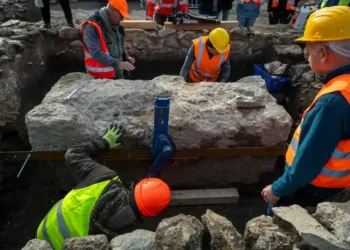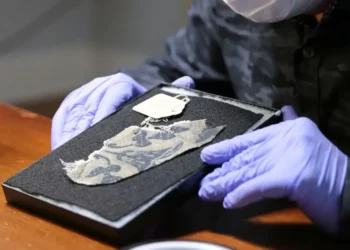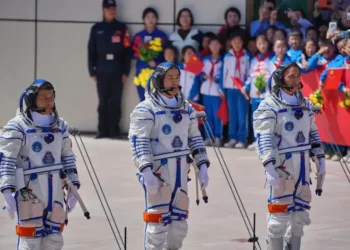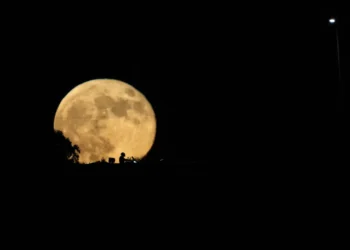Asteroid 2024 YR4 May Miss Earth—but the Moon Could Be at Risk
Written: July 29, 2025, 14:00 U.S. Eastern Time
A newly discovered asteroid that once seemed to pose a threat to Earth is no longer a direct danger to our planet—but now, astronomers are keeping a close eye on its potential to strike the moon. Asteroid 2024 YR4, roughly the size of a building, is being closely tracked after new data shifted its predicted path.
With current calculations ruling out an Earth impact, scientists are now exploring what might happen if the asteroid crashes into the moon in late 2032—and what the implications could be for future lunar missions and Earth’s satellite infrastructure.
A Near Miss for Earth, a Close Call for the Moon
First discovered in December 2024 by the ATLAS telescope in Chile, asteroid 2024 YR4 initially caused alarm. Early models suggested a possible Earth impact on December 22, 2032, with a peak probability of 3.1%—the highest risk level ever observed for a near-Earth object.
Thanks to a combination of ground-based observations and data from the James Webb Space Telescope (JWST), astronomers refined YR4’s trajectory and have since ruled out any Earth collision. However, recent measurements taken in early June 2025 before the asteroid slipped out of telescope range indicate a 4.3% chance of it hitting the moon.
According to NASA, this new data has improved orbital predictions by nearly 20%, giving scientists a more accurate idea of YR4’s potential path in seven years.
What Would a Lunar Impact Look Like?
Though small compared to planetary “killers,” asteroid 2024 YR4 is estimated to be about 60 meters (roughly 200 feet) in diameter—large enough to cause regional devastation on Earth, or significant disruption if it hits the moon.
“The energy of an impact is directly tied to the size of the object,” explained Dr. Julien de Wit, an associate professor of planetary sciences at MIT. “Knowing YR4’s size gives us a sense of how powerful the explosion would be.”
If YR4 strikes the moon, scientists estimate it could create a crater nearly 1 kilometer (0.6 miles) wide—similar in size to Arizona’s Meteor Crater. The resulting debris field could launch up to 100 million kilograms (220 million pounds) of lunar dust and rock into space.
Could It Affect Earth or Satellites?
While humans on Earth would not face any direct harm, a moon impact could have consequences for space infrastructure. Fine lunar particles traveling at extremely high speeds may eventually reach Earth’s atmosphere, causing an intense meteor shower. These particles could also threaten satellites or orbiting spacecraft.
“Even sugar-cube-sized particles moving faster than a bullet can damage sensitive satellite components,” said Dr. Paul Wiegert, lead author of a forthcoming study on YR4’s potential impact.
Though the risk of a catastrophic satellite chain reaction (known as Kessler Syndrome) remains low, even minor impacts could disrupt communications, navigation, and scientific missions.
Risk to Lunar Infrastructure and Astronauts
NASA and other space agencies have long-term goals to establish permanent lunar habitats by the 2030s. A direct impact near these installations could endanger astronauts or delay lunar exploration programs.
“The moon is no longer just a distant object—it’s part of our operational environment,” said Wiegert. “That means we need to start considering planetary defense for it, too.”
Could YR4 Be Deflected?
If asteroid YR4 were on course to hit Earth, a mission like NASA’s 2022 Double Asteroid Redirection Test (DART) might be deployed. The DART mission successfully altered the orbit of a moonlet asteroid, Dimorphos, by crashing a spacecraft into it at high speed.
However, deploying a deflection mission for an asteroid threatening the moon raises questions. Unlike Earth, the moon lacks an atmosphere to absorb impacts. Any deflection attempt would need to consider the safety of nearby lunar assets and the feasibility of intercepting such a fast-moving object.
For now, the next chance to observe YR4 will come around 2028, and researchers are already planning to use JWST and other tools to gather data.
Improving Asteroid Detection
One challenge with 2024 YR4’s discovery was that it wasn’t detected until after it had already passed Earth—hidden by the sun’s glare. This blind spot has long hindered astronomers from spotting inbound objects on sunward trajectories.
Future missions like NASA’s NEO Surveyor (launching in 2027) and the European Space Agency’s NEOMIR (set for the early 2030s) are designed to close that observational gap by detecting asteroids closer to the sun.
“NEOMIR would have spotted YR4 at least a month earlier,” said Richard Moissl, head of ESA’s Planetary Defence Office. “That would have given us more time to assess the threat.”
What Happens Next?
Though the odds of a lunar impact remain relatively low, astronomers will be watching closely. Any future collision would offer a rare opportunity to observe the effects of a real-time impact on the moon, yielding valuable scientific data.
De Wit and fellow researcher Dr. Andy Rivkin have already secured JWST observation time for spring 2026 to monitor YR4’s return to visibility. Their goal is to further refine predictions and help space agencies prepare in case deflection becomes necessary.
“This program buys us two extra years to either plan or relax,” de Wit said. “And it sets the stage for how we deal with potential impactors discovered by upcoming observatories like Rubin.”
Final Thoughts
Asteroid 2024 YR4 is a compelling case study in the evolving field of planetary defense. Though Earth is safe for now, the moon’s vulnerability marks a new frontier for protecting humanity’s expanding presence in space.
As scientists gather more data, missions like JWST, NEO Surveyor, and Rubin Observatory will play a vital role in shaping our preparedness for future celestial threats—whether they target Earth or its only natural satellite.
This article was rewritten by JournosNews.com based on verified reporting from trusted sources. The content has been independently reviewed, fact-checked, and edited for accuracy, neutrality, tone, and global readability in accordance with Google News and AdSense standards.
All opinions, quotes, or statements from contributors, experts, or sourced organizations do not necessarily reflect the views of JournosNews.com. JournosNews.com maintains full editorial independence from any external funders, sponsors, or organizations.
Stay informed with JournosNews.com — your trusted source for verified global reporting and in-depth analysis. Follow us on Google News, BlueSky, and X for real-time updates.














